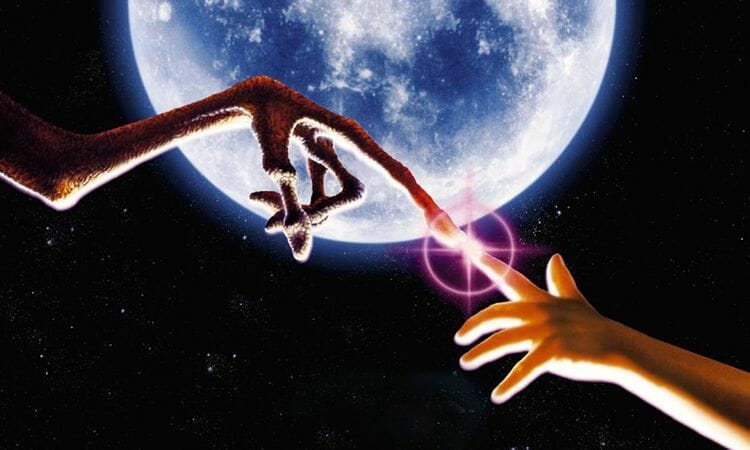Sign up for the
TSL Newsletter
and get $50 off Final Draft 12
By Alec Siegel · July 23, 2014


In 1960, following his parent’s divorce, a boy with a vivid imagination invented a friend as a means of coping with the split. At age 14, Steven Spielberg had unwittingly sown the seeds for his 1982 classic film, E.T. Elements from his unrealized 1980 project Night Skies, a collaboration with eventual E.T. writer Melissa Mathison, combined with elements from Spielberg’s childhood – his imaginary friend, his parents’ divorce, his west coast upbringing – elements that would all manifest themselves into E.T. The film captured the imagination (not to mention the wallets, as it shattered all box office records at the time) of audiences, becoming a cultural signal of the 80’s and a critical darling. 32 years after its release, E.T. is as magical as ever, and among the computer generated wizardry of today’s films, remains a singular and special achievement.
The film follows Elliott (Henry Thomas), an adorable, wide-eyed 10-year-old boy, and his increasingly interconnected-physically and emotionally-relationship with the equally wide-eyed alien E.T. The two probe and poke at each other. They squeal in delight and fright. And they grow together. E.T. learns how to speak, eventually uttering one of the most famous lines in film history (“E.T. phone home”). He learns what a goldfish is, what humans eat and drink, and what cars look like. Elliott is his tour guide on Earth. The two lonesome beings quickly become companions, a relationship that leads to equal parts joy and trouble. While the film’s human characters are well written and well acted, it’s the alien that sometimes is the most human.
E.T. has a squashed torso and oddly shaped feet. His long fingers are spidery and slimy. He looks like the underside of an elephant’s foot after stepping on Yoda’s face. Yet he’s adorable. And his eyes, wide and blue, are sorrowful at times, curious at others, but always human in their expression. His creation was a giant leap forward in cinema magic making, a technical achievement, but also proved that non-human characters can make us cry and laugh just as well as human ones can. His inspiration came from a figure Spielberg dreamed up as a lonely child, and it’s this same colorful imagination that lends the movie its magic.
Many of Spielberg’s most well loved films are shot with the mind’s eye of a child. He’s a man with a boy’s imagination and a penchant for dreaming up things that aren’t there. He makes the mundane look extraordinary. Though his most recent film, Lincoln, and many others in his extensive filmography contradict this point, many of his works imagine worlds that don’t quite exist. He invents characters that are larger than life, however with relatable circumstances, many of which embark on adventures that make us feel like the child we once were, digging for worms after a storm. E.T. is warm and touching. It’s funny and cute, yet scary enough to make the younger fans turn on an extra night light and hide under the covers. Spielberg’s films often pit the blissful ignorance and wonder of children against the realities of adulthood in his films, and E.T. is no exception.
He explores those opposing ideas, raising questions as to who or what is to be feared in the film. Is it the prodding grown-up scientists with their shiny tools and shady motivations that are scary? Or is it the baseball that comes flying back at Elliott when he hurls it into the tool shed that’s scary? The threat of adults ruining E.T.’s shot at returning home, or the unknown force that lurks in the nearby corn field? With all of its thrills and suspense, largely due to the score of longtime Spielberg collaborator John Williams, the film oozes with warmth and comfort. It’s Elliott’s bedroom, with its little gizmos, empty coke cans, fish tank and rainbow colored blinds that give it a warm feel. It’s the penultimate, iconic scene where Elliott and his friends peddle/fly their bikes against the hazy California sky. It’s E.T. riding in the bike’s basket with a white blanket over him. It’s kids ordering pizza while playing cards and yelling nonsense at each other in the waning hours of a weekend evening.
E.T., over 30 years after its release, remains an endearing work, a beautifully weaved tale of friendship told by one of Hollywood’s finest storytellers. Spielberg manages to sprinkle details from his childhood into a fantastical story that hits home with us all. E.T. is a sticky summer night with pizza and coke, a bike ride through a dark forest with a group of friends and the trill of crickets, a reassuring hug from your mother after a scare. It’s a film that is familiar in all of its elements. 40 years, 50 years, a century after its release, this film will be relevant. As E.T. says to Elliott when they say their final goodbye, “I’ll always be with you.”